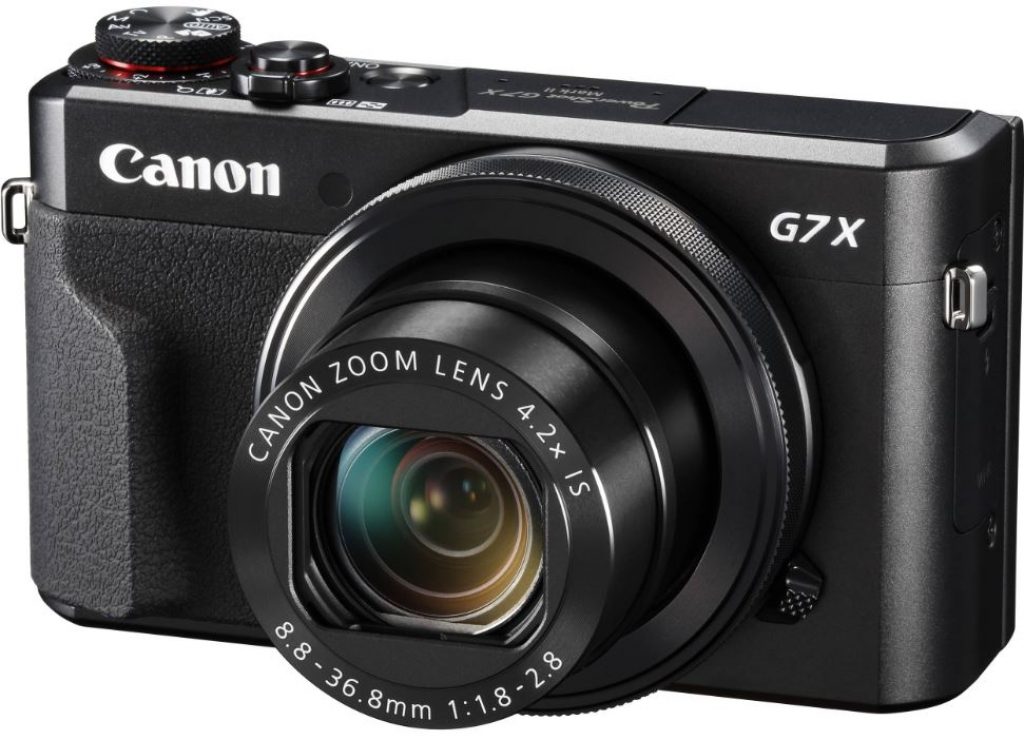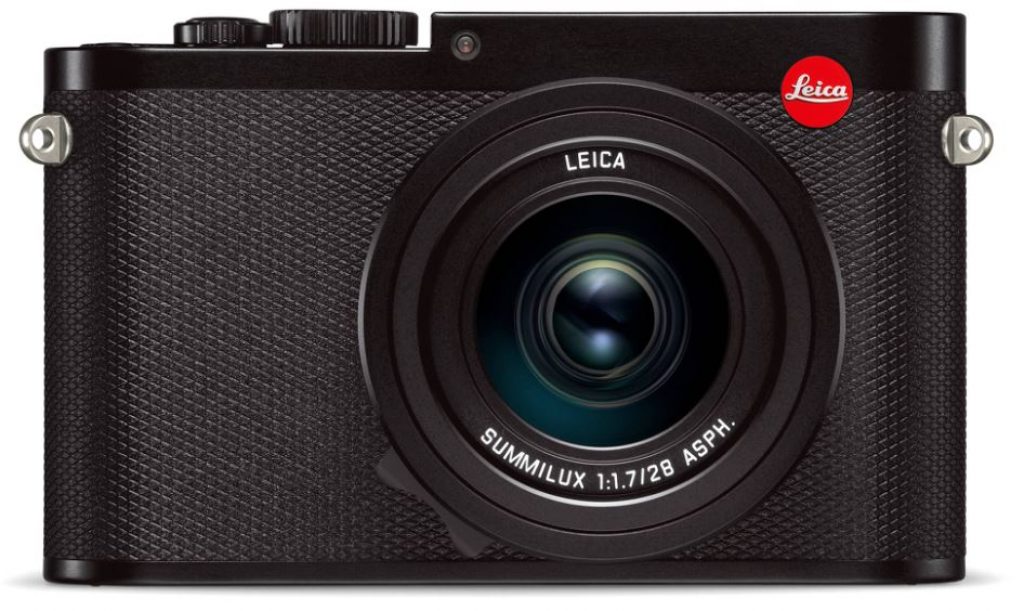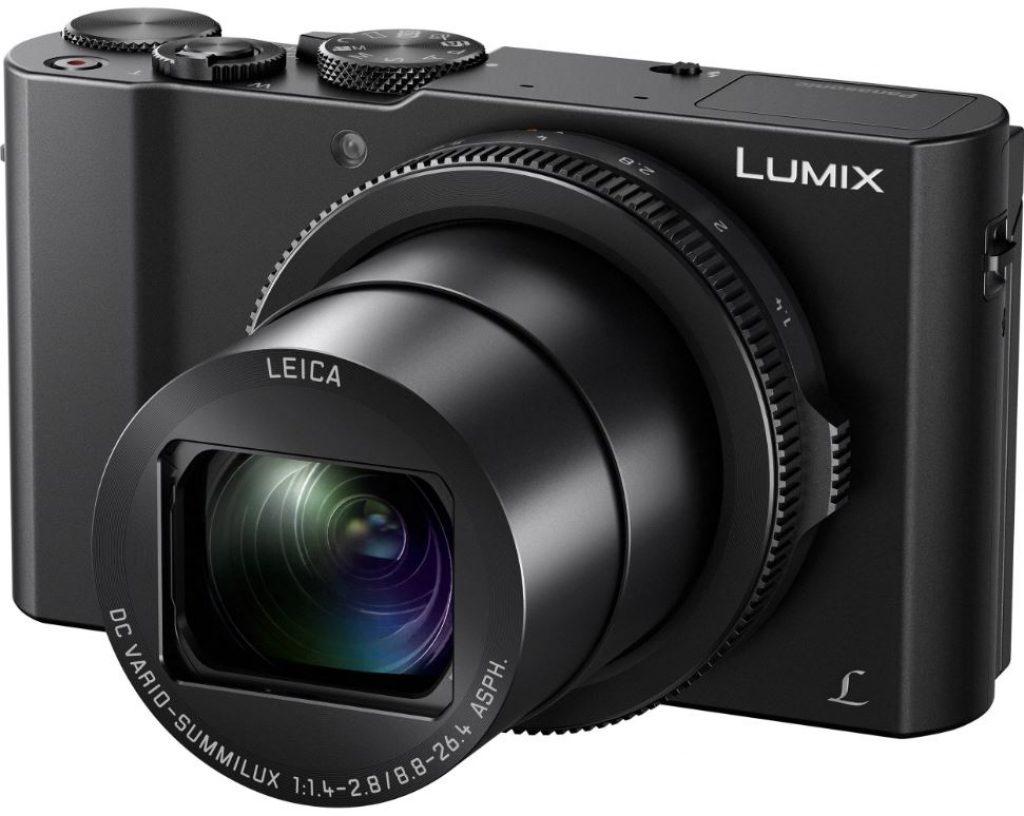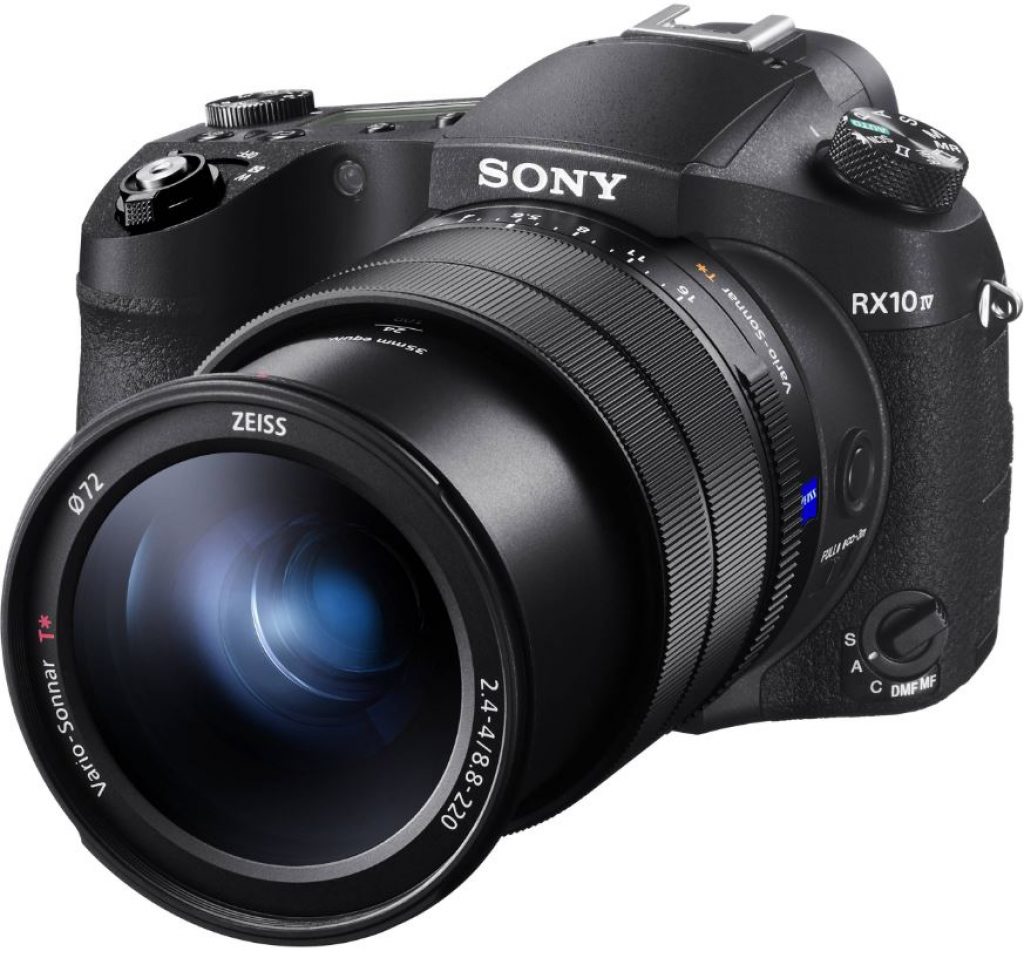
Compact cameras have pocket-sized dimensions that DSLRs and mirrorless cameras can not match, but also simple and large zoom ranges that you can easily get with a camera with interchangeable lens. And while it is true that the camera-phone technology has improved so much that the compact camera market has shrunk, the latter in response has become better and better. Today, Best Compact Cameras use larger sensors for better image quality, have high-quality metal bodies and feature powerful functions such as raw photography and old-school manual controls, along with the latest 4K video capabilities.
So what are the best compact cameras for you? Well, it depends on what you want to use it for. Our guide includes quality cameras that are small enough to fit in a jacket pocket, premium cameras with a fixed focal length that recall the best traditions of classic designs and powerful super zoom or ‘bridge’ cameras with huge zoom ranges for true all-in-one versatility. Let’s have a look at the best compact cameras in our comparison table. After that, we’ll discuss them with you, one-by-one of course.
Best Compact Cameras Comparison Table
Compact Cameras
Camera Name
Megapixels
Max Video Resolution
Panasonic Lumix ZS200
20.1 MP
4K
Canon PowerShot G7 X Mark II
20.1 MP
1080p
Fujifilm X100F
24.3 MP
1080p
Panasonic Lumix LX100 II
17 MP
4K
Leica Q (Typ 116)
12.1 MP
1080p
Panasonic Lumix LX10
20.1 MP
4K
Ricoh GR II
16.2 MP
1080p
Sony Cyber-Shot RX100 VI
20.1 MP
4K
Panasonic Lumix FZ2500
20.1 MP
4K
Sony Cyber-Shot RX10 IV
20.1 MP
4K
Panasonic Lumix ZS200

- Type: Compact
- Sensor: 1in
- Megapixels: 20.1MP
- Lens: 24-360mm f/3.3-6.4 (equiv.)
- Screen: 3in fixed touchscreen, 1.24 million dots
- Viewfinder: EVF
- Max burst speed: 10fps
- Max video resolution: 4K
- User level: Beginner/enthusiast
When you travel, the last thing you want is to be weighted with the kit. But you want a camera that can capture every subject and is as close as possible to the quality of a ‘right’ camera. That is exactly what makes the best travel cameras, and the Panasonic Lumix ZS200 is at the very top. It replaces the older ZS100, which is still for sale and one of our previous favorites. The ZS200 retains the same 1-inch 20-megapixel sensor – but adds in a 15x zoom lens with an even greater range. This covers a 24 mm wide-angle image, to a long distance 360 mm equivalent telephoto lens setting.
Top 10 Best Waterproof Cameras
It is not the longest zoom range of a travel camera, but it is the longest zoom factor in a pocket camera with such a large sensor. The ZS200 produces excellent JPEG images directly from the camera, just like its predecessor, and has the option for raw recordings and 4K video. In a macro mode, you can focus on subjects just 3 cm away and Panasonic’s 4K photo mode can generate 8K images from burst sequences at 30 frames per second. With the 4K photo mode, you can even choose your focus point after you take the picture. The Panasonic Lumix ZS200 is simply one of the best compact cameras you can buy right now.
Pros:
- Big zoom for a pocket camera
- High-quality 1-inch sensor
- Built-in electronic viewfinder
Cons:
- Sharpness fall-off at full zoom
Canon PowerShot G7 X Mark II

- Type: Compact
- Sensor: 1in
- Megapixels: 20.1MP
- Lens: 24-100mm f/1.8-2.8 (equiv.)
- Screen: 3in touch-sensitive tilting LCD, 1.04million dots
- Viewfinder: No
- Max burst speed: 8fps
- Max video resolution: Full HD
- User level: Enthusiast
With its 1in-type 20.1MP CMOS sensor, DIGIC 7 processor, RAW shots, a lens equal to 24-100mm f/1.8-2.8 and 8fps burst shots, the Canon PowerShot G7 X Mark II compact camera is a good choice for photographers. interested in the function above form. It may not have the ‘look at me’ factor in terms of unedited specifications compared to some of its rivals – for example, there is no 4K video option – but the operation, image quality, and operation are all excellent.
Low-light performance is a special highlight, as is the typical spicy Canon color palette. Among the rivals of the model-1 sensor are the Sony RX100 V and the Panasonic LX15 / LX10, but the more generous grip of the PowerShot G7 X Mark II gives a better purchase compared to the slim lines of the other two, while the manual operation spreads, 3 in a tiltable touch screen and image stabilization ensure a satisfying recording experience. Overall, this is one of the best compact cameras to go for.
Pros:
- Good lens range
- Pleasant default JPEG output
Cons:
- Slightly soft images at the wide end
- No 4K video
Fujifilm X100F

- Sensor: APS-C
- Megapixels: 24.3MP
- Lens: 23mm f/2
- Screen: 3in fixed, 1,040,000 dots
- Viewfinder: Hybrid optical/EVF
- Max burst speed: 8fps
- Max video resolution: 1080p
- User level: Expert
A retro design, a unique hybrid viewfinder and a large (for a compact) APS-C sensor made the original Fujifilm FinePix X100 one of the most desirable digital cameras with a fixed lens at the time of the release of 2011. The first ‘X ‘camera was replaced by the X100S and the X100T, each refining the formula – but it is the fourth iteration, the Fujifilm X100F, where everything came together beautifully. A new control layout, a third-generation 24.3MP X-Trans CMOS III sensor (without a low-pass filter), a wider sensitivity range and an improved AF can seem more revolutionary.
But, it’s the combination of these refinements that are a step-by-step change in performance. The aforementioned sensor, fixed 35 mm equivalent f/2 lens, X-Processor Pro engine and Film Simulation modes combine to deliver super images – and taking them is just as fun. Make no mistake, it’s not cheap, but the X100F is a beautiful compact camera for photographers.
Pros:
- Gorgeous design and build
- Great sensor and lens
Cons:
- Pricey
- A little bulky
Panasonic Lumix LX100 II

- Type: Compact
- Sensor size: Micro Four Thirds
- Megapixels: 17MP
- Lens: 24-75mm, f/1.7-2.8 (equiv.)
- Screen: 3in fixed, 1,24 million dots
- Viewfinder: EVF
- Max burst speed: 11fps
- Max video resolution: 4K
- User level: Expert
The problem with large sensors is that you need large lenses to take with you, so there is every form of pocketability. Mostly. But Panasonic has really reached the right place with the Panasonic LX100 II. It combines a Micro Four-Thirds sensor that is not much smaller than the ASP-C sensors in DSLRs with a mode, with a miniaturized lens construction that is adorned in a camera body that is so thin that it can be carried anywhere.
The Lumix LX100 II is a brand new version of the original LX100, which is starting to show its age. The new model has a 16-megapixel ‘multi-aspect’ sensor, meaning you get the standard 4: 3 aspect ratio, the 3: 2 ratio used by most DSLRs and mirrorless models, or a 16: 9 use ‘wide’ format without cropping the image and losing pixels. With an external shutter speed switch, aperture ring and an image ratio switch, the LX100 II is one of the best compact cameras for enthusiasts and experts.
Pros:
- Only compact with MFT sensor
- Fast f/1.7-2.8 lens
Cons:
- 4K video, 4K Photo modes
- 17MP is lower than some rivals
Leica Q (Typ 116)

- Sensor: Full frame
- Megapixels: 24MP
- Lens: 28mm f/1.7
- Screen: 3in fixed touchscreen, 1.04million dots
- Viewfinder: EVF
- Max burst speed: 10fps
- Max video resolution: Full HD
- User level: Expert
The Leica Q is very competitive compared to most other point-and-shoots, but if you can expand your budget, you get value for money. This premium hunk camera has a very fast, 28 mm f/1.7 stabilized lens, together with a 24.2 MP full-frame sensor, all wrapped in a luxurious Leica build quality. In terms of style, the Q has much in common with Leica’s M-series rangefinders, but it contains a 3.68 million dot electronic viewfinder and a touch screen, and it is also the first full-frame camera of the company that has autofocus. What it lacks in modern functions for compact cameras, such as an extensive range of filter effects, is compensated with a solid core of traditional illumination control and excellent image quality. It is simply one of the best compact cameras out there.
Top 10 Best Cameras For Professionals In The World
Pros:
- Excellent build quality
- Very sharp lens
Cons:
- Fixed focal length
- No 4K video
Panasonic Lumix LX10

- Type: Compact
- Sensor: 1in
- Megapixels: 20.1MP
- Lens: 24-72mm f/1.4-2.8 (equiv.)
- Display: 3in tilting touchscreen, 1,040,000 dots
- Max burst speed: 10fps
- Max video resolution: 4K
- User level: Enthusiast
The Lumix LX10 is another Panasonic compact that packs an impressive scale of performance for its small size. The big proverb is the 24-72 mm (equivalent) Leica lens. It is not so much the focal length range – which finally offers a shrugging standard range – but rather the bright f/1.4 maximum aperture at the wide end. Such a large aperture means that the ISO does not have to be pushed so high to achieve fast shutter speeds in low light, keeping the sound at a distance.
The camera also has a reliable AF system, which increases the chance of sharp shots even though the lack of a good grip is not ideal. Like the Panasonic ZS100 and ZS2000 superzooms, the LX15 has a 20.1 MP, 1-in-1 CMOS sensor in the heart, which not only collects more light than a traditional compact camera sensor but also captures 4K videos. The image quality for both photos and videos is also excellent, which is the main reason to upgrade from a smartphone to a point-and-shoot camera like this one. Overall, this is one of the best compact cameras to buy right now.
Pros:
- Large sensor in a tiny body
- Great image and video quality
Cons:
- No viewfinder
- Lack of integrated ND filter
Ricoh GR II

- Type: Compact
- Sensor: APS-C
- Megapixels: 16.2MP
- Lens: 18mm f/2.8 (equiv. to 28mm)
- Screen: 3in fixed, 1,230,000 dots
- Max burst speed: 4fps
- Max video resolution: 1080p
- User level: Enthusiast
It may take a bit of a long time, but the Ricoh GR II still has enough to please the photography enthusiast and although a Ricoh GR III with 24 megapixels is waiting in the wings, it is still only in the development phase. Meanwhile, the GR II has a lot of appeal for enthusiasts. There is little in the way of strange attention-grabbing functions to wipe out its specification sheet; instead, what you get with the GR II is a camera that gets the basics, including a large 16 MP APS-C sensor, raw shots, a fixed 28 mm (equivalent) f/2.8 lens that is remarkably sharp, and a housing containing magnesium alloy for light weight and strength.
The GR II packs a modern convenience in the form of Wi-Fi, with which remote cameras can be operated and image transfer via a smartphone. The camera is a great choice for street photography and landscapes, but thanks to the wide-angle lens this is a bad option for close-up portraits, sports, and wildlife. That said, spend some time with the GR II and you will appreciate the no-nonsense, focused way of doing business. And overall, this is one of the best compact cameras to buy right now.
Pros:
- Solid build
- Excellent detail in images
Cons:
- Fixed lens
- No touchscreen
Sony Cyber-Shot RX100 VI

- Sensor: 1in
- Megapixels: 20.1MP
- Lens: 24-200mm, f/2.8-4.5
- Screen: 3in tilting, 921,600 dots
- Viewfinder: EVF
- Max burst rate: 24fps
- Max video resolution: 4K
- User level: Intermediate/expert
It is not difficult to understand why this model has made our list of the best compact cameras. When it comes to high-quality functions, few premium compact cameras can match the Sony Cyber-shot RX100 VI. It even makes some mirrorless cameras and DSLRs look positively slow. This is a camera that can take full-resolution images at 24 fps with continuous AF and automatic exposure throughout the process. The camera also features generous 315 phase detecting AF points and can record 4K images that are downsampled with a 5.5K resolution for sharper results.
There are a few strange omissions for a camera of this caliber – for example, a touch screen – and the lack of good handgrip is disappointing. Also, his 2.9x optical zoom feels a bit out of proportion with his action-stopping, sports-friendly burst rate, and it might not be as easy to achieve manual operation as some of his rivals. But – and it is a big one – but the refinement of the specifications is unmistakable. If you want one of the most advanced compact cameras on the market, choose the RX100 VI. And if your budget does not stretch, the RX100 IV is one of the best compact cameras right now.
Pros:
- Great image quality
- 8.3x zoom range
- 24fps burst shooting
Cons:
- Pretty expensive
Panasonic Lumix FZ2500

- Type: Superzoom compact
- Sensor: 1in
- Megapixels: 20.1MP
- Lens: 24-480mm f/2.8-4.5 (equiv.)
- Viewfinder: EVF
- Screen: 3in vari-angle touchscreen, 1.04million dots
- Max burst speed: 12fps (30fps at reduced resolution)
- Max video resolution: 4K
- User level: Enthusiast
Panasonic knows how to build high-quality hybrid cameras that offer an extensive package of video functions, in addition to catering for first-class photos with photos. The Panasonic Lumix FZ5000 is a good example and can record both 4K DCI and 4K UHD footage at 30p and 24p, as well as Full HD at 60p, and it’s filled with useful features like focus peaking, zebra stripes, SMPTE time code, and color bars. It also has two built-in ND filters to help illuminate videos, another feature normally associated with high-end camcorders.
The FZ2500 is styled like a miniature DSLR and is a super zoom camera that also ticks all photo requirements and offers excellent image quality thanks to its 20.1 MP 1in sensor, along with a very fast AF system and highly effective image stabilization technology – essential if you have as much as a 24-480 mm f/2.8-4.5 zoom lens in the package. Overall, this is one of the best compact cameras on the market.
Pros:
- Strong video specs
- Useful lens range
Cons:
- No weather sealing
- Sony RX10 III boasts a longer lens
Sony Cyber-Shot RX10 IV

- Type: Superzoom compact
- Sensor: 1in
- Megapixels: 20.1MP
- Lens: 24-600mm f/2.4-4 (equiv.)
- Screen: 3in tilting, 1.44 million dots
- Viewfinder: EVF
- Max burst speed: 24fps
- Max video resolution: 4K
- User level: Enthusiast/Expert
At first glance, the Sony RX10 IV looks like a very large, expensive and not very unusual camera with a long zoom lens. But you have to look better because what Sony has actually made is perhaps the first ‘professional’ bridge camera in the world. It features a 20-megapixel 1-inch sensor for much higher image quality than the typical bridge camera, married to a long-range 24-600mm equivalent f / 2.4-4 lens that not only offers a faster maximum aperture than a typical bridge camera but an unusually good picture quality at the maximum zoom setting.
This is where almost all cameras with a long zoom fall down, but the RX10 IV remains sharp throughout the entire focus range. It has so much in common with its predecessor the RX10 III, also a favorite of us and still for sale at a lower price. But the autofocus of that camera grew slowly at high zoom settings and while recording video, while the RX10 IV adds a much faster and more powerful hybrid AF system with no less than 315 phase detection AF points. The image quality of the RX10 IV is even more relevant for creators because the large-scale 4K recording and the efficient autofocus make it a powerful alternative for best compact cameras with interchangeable lenses.
Pros:
- Excellent, consistent lens
- Great image and video quality
- Uprated autofocus
Cons:
- Expensive for a bridge camera
Final Words
Compared to old compact cameras, manufacturers are now inclined to design models based on physically larger sensors than was previously the norm. The result of this change is that you now get a considerably better image quality than even the best smartphone. In some cases, the sensors may compete with DSLRs and mirrorless cameras in some high-end compact cameras. Our list of Best Compact Cameras consists of 10 best compact cameras that you can buy right now.
